Theseus as an Indo-European Sword Hero, with an Excursus on Some Parallels between the Athenian Monster-Slayer and Beowulf
C. Scott Littleton
Occidental College, Los Angeles, CA
© 2008 by C. Scott Littleton. All rights reserved. This edition copyright © 2008 by The Heroic Age. All rights reserved.
Abstract: This paper compares Theseus and Beowulf. Both heroes come from afar, enter dangerous, underground realms, and slay ravenous monsters with magical swords. It is suggested that the two figures have a common origin and are part of the Indo-European sword-hero complex.
§1. Ever since the late Taryō Ōbayashi and Atushiko Yoshida published their seminal—and, unfortunately, still untranslated—book Tsurugi no Kami, Tsurugi no Eiyu, or Sword Gods and Sword Heroes, in 1981, it has become abundantly clear that sword-related gods and heroes are a fundamental feature of Eurasian mythology and folklore, from Western Europe to Japan.1 A year later (Littleton 1982), I attempted to demonstrate that sword heroes, as well as sword gods, are deeply rooted in the North Iranian epic tradition, and that the "Sword in the Stone" episode, which plays such an important role in the Arthurian legends, was carried to Western Europe by Sarmatians and Alans in the early centuries of the Common Era. More recently, Linda A. Malcor and I elaborated this thesis in a chapter of our book From Scythia to Camelot (2000), and in 2006 at the Western States Folklore Society meeting at the University of California, Berkeley, we suggested that sword gods and sword heroes play an important role in ancient Germanic mythology (Littleton and Malcor 2006).
§2. It is still not altogether clear precisely where and when the sword hero figure originated.2 Although clearly present in a number of ancient Indo-European traditions, most visibly in those influenced by the Alano-Sarmatians, it is also possible that this figure may belong to a much more ancient and widespread Eurasian epic stratum, and that its presence in Hunnish, Chinese, Korean, and Japanese mythology predates any possible contact, direct or indirect, with Indo-European speakers (Ōbayashi and Yoshida 1981, 10-13). I don't have enough space in this paper to do justice to this most interesting possibility. Rather, in what follows, I will focus on the Indo-European sword-hero tradition, and begin by looking at what I consider to be the principal Greek reflex thereof, the great Athenian hero Theseus (Θησεύς). I will then attempt to demonstrate some striking parallels between him and the Anglo-Saxon (or, more accurately, Swedish) sword-hero hero Beowulf.
The Sword under the Stone
§3. Like the careers of Theseus' Eurasian counterparts, Indo-European and otherwise, from King Arthur, Lancelot, and the legendary Ossetic figure Batraz to Odin, Siegfried, Attila, and the Japanese hero Yamato-takeru (Littleton 1995), all of whom possess one or more remarkable swords, the Greek hero's career begins when he obtains a special sword, in his case one left for him by his father, Aigeus, king of Athens. As Aigeus had no children, he arranged with his good friend Pittheus, king of Troizen, a city in the Argolid (see Map 1), to make love to the latter's daughter, Aithra, and thereby produce an heir. (Like Herakles, whom he closely resembles in many respects—absent, of course, the sword-hero aspect—and a number of other Greek heroes, Theseus is also sometimes credited with having a divine father. Poseidon was said to have slept with Aithra the same night Aigeus did.3 The god, however, plays little or no part in Theseus' life.)
§4. In any event, according to Plutarch (Theseus) and Apollodorus (III, 206),4 the primary sources for the Theseus legend, Aigeus soon returned to Athens, but before leaving he placed his sword and a pair of sandals under a heavy stone and instructed his pregnant paramour to guard them for his unborn son. Once the young prince is strong enough to lift the stone (Plate 1) she was to send him to Athens. Thus, like Arthur, who receives the second Excalibur from the Lady of the Lake; Lancelot, who receives his magical sword from her Continental counterpart, the Dame du Lac; Batraz, who obtains his wondrous weapon through the agency of his aunt, the seeress Satana, who has the divine smith Kurdalagon forge it for him (Dumézil 1978, 28); and the Japanese hero Yamato-takeru, who is given the famed Kusanagi sword by his aunt, Yamato-hime, the high priestess of Ise, Theseus also obtains the sword he will wield so effectively in his subsequent adventures with the help of a close kinswoman woman—in this case, his mother Aithra.
§5. At the same time, Theseus is comparable to those sword heroes who, like Arthur and, as we'll shortly see, Beowulf, obtain at least one mighty weapon directly from (or under) a stone or in a stony milieu, such as a rocky cave,5 without the help of a female relative. Thus, in Theseus we see a conflation of the two modes in which sword heroes obtain their iconic blades.
§6. But let us return to the narrative in question. Wearing the sandals and bearing the sword he had withdrawn from under the stone (some versions state that they were actually cached in a small cavity in the base of the stone), young Theseus sets out for Athens. From Troizen, it's an easy sea voyage across the Gulf of Argos (see Map 1) but, being a hero eager for adventures, he chooses the long way around, north through the Argolid and across the Isthmus of Corinth into Attica. En route, he finds more than enough to keep him—and his newfound sword—busy.
§7. Near Epidaurus, Theseus slays a brigand called Korynetes, or "Club-Man." (Plate 2) Afterward, he appropriates—and later uses—the brigand's lethal club, a trait that was probably borrowed from the Herakles legend. Next, he kills Sinis, the "Pine-Bender," so-called because he regularly tied his victims between two pine trees (Plate 3), and then goes on to hunt and kill the Grey Sow of Krommyon (Plate 4). When he reaches the vicinity of Megara, on the edge of Athens, Theseus slays another brigand, named Skeiron, who had a habit of throwing passersby off a cliff after compelling them to wash his feet (Plate 5). At Eleusis, he kills a formidable wrestler named Kerkyon (Plate 6) and as he approaches Athens itself he manages to overcome Procrustes, who either lopped off his victims' limbs or stretched them to fit his infamous bed (Plate 7). Thus, by the time Theseus finally reaches Athens, he has already begun to establish himself as a sword hero.
§8. After a narrow escape from being poisoned by the ever evil Medeia, who had taken refuge with Aigeus, the young hero's sword and sandals reveal who he is, and his father happily recognizes him as his son and heir. But Theseus soon learns that Athens has a big problem. The city had recently been resoundingly defeated by Minos, the king of Crete, and is obliged to send an annual tribute of seven young men and an equal number of maidens to be devoured by the Minotaur, or to become lost and die of starvation in the famous Labyrinth at Knossos.
§9. This part of the story is well known and need not be rehearsed in detail here. Theseus volunteers to be one of the tributary youths. When his ship reaches Crete, he seduces Minos' beautiful daughter Ariadne into leading him through the underground (or at least sub-basement) Labyrinth to the Minotaur, where he kills the monster (Plate 8). As Ariadne had unrolled a golden thread behind them, they are able to escape easily. En route back to Athens, however, our hero unceremoniously dumps his lover on the island of Naxos. (To say that Theseus' love life is complicated is a major understatement!) In any case, he and his band of liberated young Athenians are so overjoyed that they forget to hoist the white sail that would signal "mission accomplished," and poor Aigeus, watching from a cliff top, is so despondent that he throws himself into the sea that subsequently came to bear his name (see Note 2).
§10. Theseus is now king of Athens. Like Arthur and the rest of the Indo-European sword heroes, he has fully demonstrated his right to rule by triumphantly wielding his father's sword in the name of his community. The Minoan yoke is no more.
§11. The rest of Theseus' career is primarily devoted to a series of much needed institutional reforms in the government of his city—whence his name, as it probably derives from same root as Greek Θεσμός, or "institution"—and to a tangle of romantic involvements. His has only two significant heroic adventures after returning to Athens. One is subduing the ferocious Bull of Marathon and bringing it back to Athens for sacrifice (Plate 9), which, together with his killing of the Minotaur, suggests a possible parallel with the bull-sacrificing god Mithras.6 The other, in which he is joined by his good friend and counterpart Herakles, is fighting a war against the Amazons. The war not only ends in triumph, but also in his marriage to the defeated Amazon queen, Hippolyte (Plate 10).
§12. After Hippolyte dies, leaving him with a son named Hippolytus, Theseus marries again, this time to Ariadne's sister Phaidra. The union ends in a well-known tragic episode that has fascinated litterateurs, from Euripides on. Phaidra falls madly in love with young Hippolytus (Plate 11). When he repulses her, she hangs herself, but not before leaving a letter implicating her stepson. Theseus curses and banishes Hippolytus, who subsequently dies in a tragic chariot accident.7 It soon becomes apparent that the boy was innocent of any deception; however Theseus' actions in this matter lead to a loss of favor in Athens. After several rebellions, he dies in exile, his glory days far behind him.
§13. Although these and other specific features of what I call, using the Hollywood phrase, the "back story" of the Theseus legend do not match those of the other Indo-European sword heroes (To be sure, both Arthur and Lancelot also have tangled love lives!), its core elements—receiving a wondrous sword from a woman, as well recovering it from under, if not actually from within a stone and wielding it effectively on behalf of his community—are comparable to the legends of Arthur, Batraz, and other Indo-European sword heroes.8 As I said a moment ago, it conflates the two modes by which such heroes acquire their weapons.
§14. Yet there is yet another specific Indo-European comparison here that cries out to be made: that between Theseus and the Anglo-Saxon (at least in the telling) sword hero Beowulf. Again, the back stories are very different. The central elements of the two legends are so similar, however, that they almost certainly derived from a common Indo-European prototype.
The Labyrinth and the Lair
§15. The basic outlines of the Beowulf legend can be summarized briefly as follows: Beowulf, a young nephew of Hygelac, king of the Geats (see Map 2), hears that the court of the Danish king Hrothgar is being terrorized by a monster named Grendel.9 Eager for adventure, he sails with a band of warriors across the straits that separate his homeland in what is now southern Sweden from Denmark and makes his way to Heorot, Hrothgar's mead-hall. That evening, while the company sleeps, Grendel attacks, but this time he comes face to face with Beowulf. They struggle, hand-to-hand, and the Geatish hero tears off Grendel's shoulder with his bare hands (Plate 12). Mortally wounded, the monster slinks away, and the next evening, thinking all's well, Hrothgar throws a feast in honor his guest's victory.
§16. Yet all is not well. After Hrothgar and the others retire for the night, Grendel's unnamed mother attacks Heorot, seeking vengeance for her dying son. She captures one of the courtiers and drags him back to the lair she shares with Grendel, which is located in a grotto beneath a lake some distance from the hall out in the fens.
§17. Up to this point there are few if any clear-cut parallels with the Theseus story. Although Beowulf presumably carries a sword, he decides not to use it in the fight with Grendel. But what happens next not only closely parallels the Minotaur tale, but also establishes our hero's credentials as a full-fledged sword hero.
§18. The next morning, Beowulf, who was not present in the hall at the time Grendel's mother struck, volunteers to follow her to her lair and finish the job. He and his war-band set out toward the fens. Before they leave Heorot, Unferth, one of Hrothgar's thanes, gives the Geatish hero a sword named Hrunting, the first of two fabulous swords that will figure in the story. (It is clear that this time Beowulf will not rely simply on his prowess as a wrestler.) When they reach the lake, Beowulf leaves his band on the shore, dives in, and comes out in the monsters' lair, which is described as a cave-like "hostile hall." He attacks Grendel's mother with Hrunting, but the otherwise infallible weapon proves to be useless. The ferocious she-monster throws him to the ground and is about to deliver a death blow, when, in the nick of time, Beowulf spots another wondrous sword—a sword that only a hero of his prowess can successfully wield—in a pile of armor stacked against the cave wall. With it, he dispatches Grendel's mother (Plate 13), beheads her dying (or already dead) son, and returns to the surface in triumph, bearing the trophy.
§19. The hardy band returns to Heorot, and this time they and Hrothgar party with no lingering fear of being devoured. Shortly thereafter, Beowulf returns to Geatland, full of honors, and eventually succeeds Hygelac as king. The parallels to the Theseus legend are striking. First of all, both heroes descend into a netherworld to fight their climactic battles. Both use wondrous weapons to achieve victory. Indeed, despite the absence of a female sword-bestower—one might possibly argue that Grendel's mother is responsible for his obtaining the sword that kills her, as he discovers it in her lair, but this would be a stretch—Beowulf's two successive magical swords are curiously similar to the two successive Excaliburs in the Arthurian legend: the one Arthur pulls from the stone and the one he receives from the Lady of the Lake. To be sure, the order here is reversed. The named sword Beowulf is given (by a male) comes first, while the powerful, unnamed sword he finds against the cave wall, if not in or under a stone, comes second. Also, after the battle the blade of the second sword wastes away from the "heat" of the she-monster's blood, and all that's left of it is its hilt. I should add that later on, after he returns home, Beowulf acquires as a battle trophy a third and final sword, called Naegling, which also fails him in a mortal combat with a dragon. But this weapon and the episode just mentioned, like Theseus' post-Minotaur exploits, fall outside the primary focus of this paper. So does the possibility that the anonymous author of Beowulf approached his task from a specifically Christian standpoint; the key elements in the story are obviously far older than the presence of Christianity in southern Scandinavia and Britain circa 700 C.E.
§20. Another possible parallel between the two legends can be seen in the fact that both Theseus and Beowulf come from afar, Troizen and Geatland, respectively, to perform their noble deeds. Beowulf crosses a body of water to get to Denmark, as well as to access the monsters' lair, just as Theseus crosses the Aegean to get to the Labyrinth. Also, they both return home triumphantly by sea, to become kings. Theseus succeeds his father Aigeus as king of Athens, and, after the death of Hygelac's son and successor, Heardred, Beowulf becomes king of the Geats.
§21. Also important is the fact that the monsters in question are not dragons, but rather powerful, humanoid "others."10 From the sketchy descriptions in the poem, I've always pictured both Grendel and his ferocious mother as hairy, Big-Foot-like creatures. And the Minotaur is, of course, very precisely described as having the body of a man and the head of a bull. As I just mentioned, in later years, when he has aged considerably, Beowulf and his eventual successor, Wiglaf, do slay a bona fide dragon (Plate 14), which, after the Geatish king's final sword breaks, mortally wounds him. Neither Grendel, his mother, nor the Minotaur display, however, any draconic characteristics whatsoever.
§22. Finally, the monster's mother looms large in each narrative. The Minotaur's mother is Minos' queen, Pasiphaë. Poseidon had sent the Cretan king a beautiful white bull, to be sacrificed to him, but Minos decided to keep the animal and sacrifice another bull. Annoyed by this defiance, the god causes Pasiphaë to fall madly in love with the white bull. At her request, Deadalus builds a hollow wooden replica of a cow, into which the queen crawls and tricks the bull into mounting her. To everyone's horror, she gives birth to a monster (Plate 15). Subsequently, Minos has Daedalus build the Labyrinth to contain the creature. Although Pasiphaë herself is not a monster and does not attempt to avenge her slain offspring, I submit that her prominence in the story is yet another point of comparison.
Some Tentative Conclusions
§23. As I have indicated, the back stories here are very different—for example, Beowulf's love life, whatever it may have been, is not mentioned anywhere in the poem.11 And there are, of course, some core structural differences, such as the absence of a lake atop the Labyrinth in the Theseus story. Nevertheless, on the basis of the evidence presented in this paper, I do think a few tentative conclusions are in order:
(1) Theseus and Beowulf are not only reflexes of a common Indo-European sword-hero tradition, but also of a subset of that tradition that tells of a hero's descent to a netherworld to slay a non-draconic monster and/or its mother, one or both of whom are threatening the survival of the hero's community. And as we have just seen, the monsters' mothers play significant, albeit disparate roles in both stories.
(2) Both heroes share traits found throughout the sword-hero complex, including figures like Arthur and Batraz, who never slay monsters, draconic or otherwise. For example, swords are retrieved from rocky contexts; this includes Beowulf's fortunate discovery of a magic sword against a rock wall in Grendel's subterranean lair.
(3) In the case of Theseus, a woman—his mother, Aithra—plays an important role in the sword bestowal, thus conflating what are wholly separate episodes in the Arthurian tradition and a single, albeit non-lithic episode in the Batraz saga.
(4) At the same time, the fact that neither Theseus nor Beowulf feels constrained to insist that his weapon be consigned to a body of water before he dies clearly sets this subset of the sword hero complex apart from the one that includes Arthur and Batraz.
(5) While no female plays any clear part in how Beowulf obtains his successive swords, the fact that he wields two successive swords in the central episode of the story does suggest the two successive Excaliburs in the Arthurian tradition.
(6) Finally, although much has been written about the extent to which Beowulf is or is not a "Christian" hero, despite the obvious pagan context of the story, this aspect is irrelevant to the matter at hand. So is the extent to which the Theseus legend may contain indigenous Aegean elements (e.g., both Pasiphaë and Ariadne may derive from Minoan fertility goddesses). Whatever else they may be, Beowulf and Theseus clearly belong to a subset of the overall Indo-European sword-hero complex. Moreover, they also share at least some elements in common with figures belonging to other subsets of that complex.
§24. In sum, I hope that the foregoing assessment of the parallels between the Theseus and Beowulf legends has managed to throw some additional light on this most important, albeit still imperfectly understood feature of the ancient Indo-European epic tradition.
Figures

Map 1: Bronze Age Greece [Back]
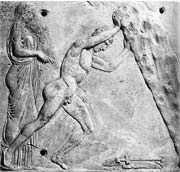
Plate 1: Theseus discovering his father's sword [Back]

Plate 2: Theseus killing Korynetes ("Club-Man") [Back]

Plate 3: Theseus killing Sinis, the Pine-Bender [Back]
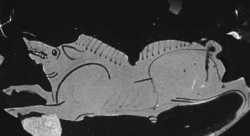
Plate 4: The Grey Sow, called Krommyon [Back]
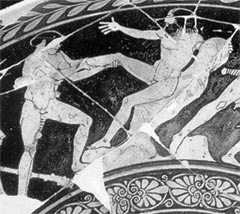
Plate 5: Theseus pushing Skiron off a cliff [Back]
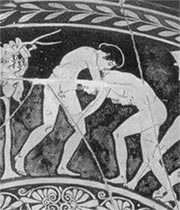
Plate 6: Theseus killing Kerkyon [Back]
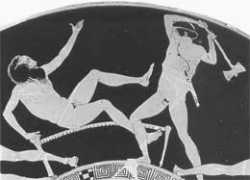
Plate 7: Theseus killing Procrustes [Back]
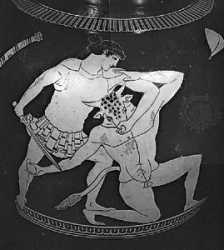
Plate 8: Theseus killing the Minotaur [Back]

Plate 9: Theseus capturing the Marathon Bull [Back]
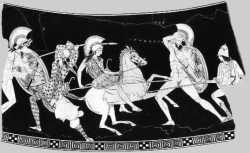
Plate 10: Theseus fighting the Amazons [Back]
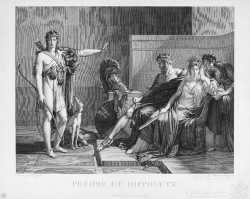
Plate 11: Hippolytos and Phaedra [Back]
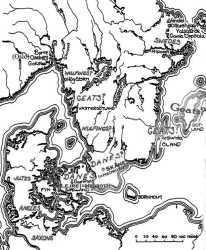
Map 2: Sites Associated with Beowulf [Back]
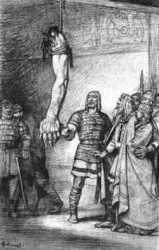
Plate 12: Beowulf displays Grendel's arm in Heorot [Back]
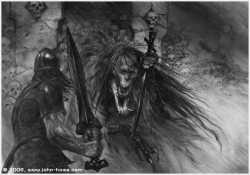
Plate 13: Beowulf kills Grendel's mother [Back]
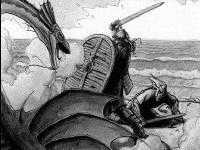
Plate 14: Beowulf and Wiglaf kill a dragon [Back]
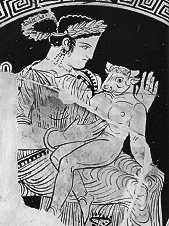
Plate 15: Pasiphaë holding the baby Minotaur [Back]
Notes
1. A version of this paper was presented at the Western States Folklore Society meeting, April 20, 2007, at the University of California, Los Angeles. [Back]
2. For a comprehensive overview of the hero tradition, sword-related and otherwise, see Miller 2000. [Back]
3. According to Rose (1959, 264), the dual-parentage conundrum here may be resolved by the fact Aigeus, the eponym of the Aegean Sea, is a localized form of Poseidon. [Back]
4. The editions of Apollodoros's Bibliotheca and Plutrach's Life of Theseus consulted in this paper are, respectively, Hard 1997 and Plutarch 1974. See also Rose (1959, 264-266). I might add that Plutarch makes no mention of Theseus' putative divine parentage. [Back]
5. That this mode in turn reflects a very ancient metaphor for metallurgy, which necessarily involves smelting ore from rocks and stones, quarried from deep in the earth, seems highly probable. [Back]
6. The ancient Iranian—and later Greco-Roman—god Mithras was a solar figure who annually sacrifices a sacred bull symbolic of spring; see Ulansey 1991. This would appear to have astrological implications, as the bull represents the constellation Taurus, and the other animals that take part in the sacrifice—a snake and a dog—also have important astrological connotations. That Theseus and the Iranian deity—or at least his Greco-Roman persona—sprang from a common source is a distinct possibility. [Back]
7. While driving along the edge of a cliff by the sea, his horses are startled by a sea serpent. Hippolytus falls out of the chariot and is dragged to death. [Back]
8. All of the Indo-European Sword heroes mentioned in this paper, including Theseus, belong primarily to what the late Georges Dumézil (1973) called the "Second" or warrior function (F2) in the triad of Indo-European ideological functions (see also Littleton 1982). However, like a great many warrior figures, from Romulus to Beowulf, Theseus eventually becomes a king and is thus "promoted" to the 'First" or sovereign function (F1). See also Dumézil 1973. [Back]
9. The translations of Beowulf consulted in this paper are those of Tuso 1975 (Donaldson), Chickering 1977, and Heaney 2000. [Back]
10. Both the Minotaur and Grendel, to say nothing of the latter's mother, would seem to fit neatly into what N. J. Allen (1987) has defined as the "Fourth" Indo-European ideological function (F4), the central feature of which is "otherness." [Back]
11. According to Tauno Mustanjoa (cited by Miller 2000, 423), the speculation that Beowulf married Hyglac's widow, Hydg, "or any woman whatsoever," is without foundation. Indeed, absent Grendel's mother, the female characters in Beowulf are all extremely peripheral. The only ones even mentioned by name are Hygd, Wealhtheow (Hrothgar's queen), and a Medusa-like, Geatish princess named Modthryth (see Shippey 2001), who at first causes the death of any man that looks at her face, but eventually redeems herself after she marries the historic Saxon king Offa. However, this latter episode takes place "off-stage," as it were, and is unrelated to the story. [Back]
Works Cited
Allen, N. J. 1987. The ideology of the Indo-Europeans: Dumézil's theory and the idea of a fourth function. Journal of Moral and Social Studies 2:23-39. [Back]
Chickering, Howell D. Jr., trans. 1977. Beowulf: A dual-language edition. New York: Anchor Books. [Back]
Dumézil, Georges. 1973. The destiny of a king. Trans. Alf Hiltebeitel. Chicago: University of Chicago Press. [Back]
———. 1978. Romans de Scythie et'd'alentour. Paris: Payot. [Back]
Hard, Robin. 1997. Apollodorus: The library of Greek mythology. New York: Oxford University Press. [Back]
Heaney, Seamus, trans. 2000. Beowulf: A new verse translation. New York: Farrar, Straus, and Giroux. [Back]
Littleton, C. Scott. 1982. From swords in the earth to the sword in the stone: A possible reflection of an Alano-Sarmatian rite of passage in the Arthurian tradition. In Homage to Georges Dumézil, ed. Edgar C. Polomé. Washington, DC.: Journal of Indo-European Studies Monograph No. 3. [Back]
———. 1995. Yamato-takeru: An 'Arthurian' hero in Japanese tradition. Asian Folklore Studies 54:259-274. [Back]
Littleton, C. Scott, and Linda A. Malcor. 2000. From Scythia to Camelot: A radical reassessment of the legends of King Arthur, the Knights of the Round Table, and the Holy Grail. New York: Garland Publishing Inc. [Back]
———. 2006. The Germanic sword in the tree: Parallel development or diffusion? Berkeley, CA: Annual Meeting of the Western States Folklore Society. [Back]
Miller, Dean A. 2000. The epic hero. Baltimore: Johns Hopkins University Press. [Back]
Ōbayashi, Taryō, and Atsuhiko Yoshida. 1981. Tsurugi no kami; tsurugi no eiyu: Takemikazuchi shinwa no hikaku kenkyu. [Swords gods; sword heroes: Comparative studies in the mythology of Takemikazuchi]. Tokyo: Hosei Daigaku Shuppankyoku. [Back]
Plutarch. 1974. Plutarch's lives. Trans. Alan Wardman. Berkeley: University of California Press. [Back]
Rose, H. J. 1959. A handbook of Greek mythology. New York: E. P. Dutton & Co. [Back]
Shippey, Tom. 2001. Wicked queens and cousin strategies in Beowulf and elsewhere. The Heroic Age 5 (http://www.heroicage.org/issues/5/Shippey1.html.) [Back]
Tuso, Joseph F., ed. 1975. Beowulf: The Donaldson translation, backgrounds and sources criticism. New York: W.W. Norton & Company. [Back]
Ulansey, David. 1991. The origins of the Mithraic mysteries: Cosmology and salvation in the ancient world. New York: Oxford University Press. [Back]

